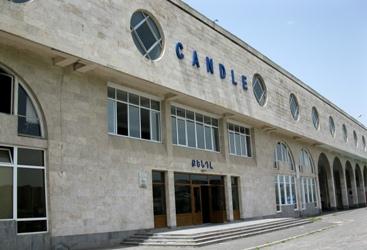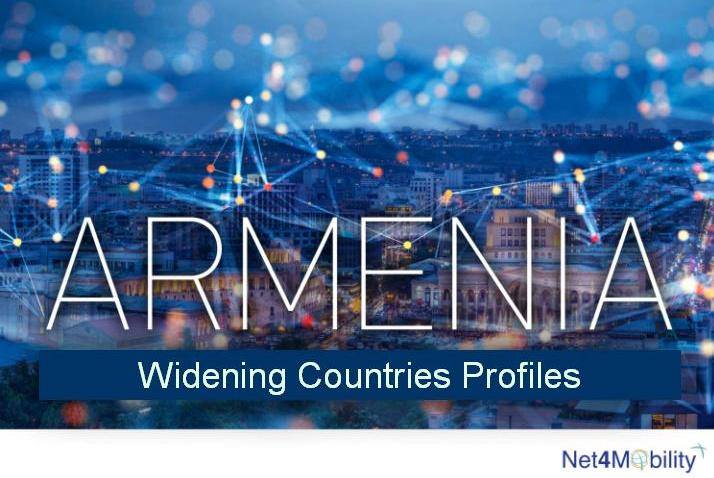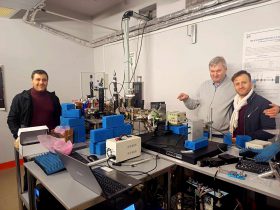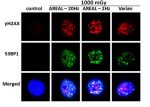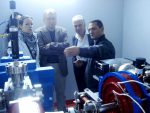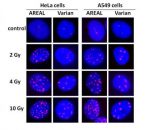December 16, 2020
Despite the pandemic outbreak of COVID-19 in the world and the corresponding restrictions, the experimental research at AREAL was not interrupted and new scientific results have been obtained for currently running international projects.
In the framework of the research project “Molecular and Cellular Effects of Ultrashort Pulsed Radiation”, supported by the Russian Science Foundation, an international team of scientists headed by Prof. Andreyan Osipov (Russia) and Prof. Rouben Aroutiounian (Armenia) published the new experimental results of AREAL ultrashort electron beam irradiation effects on cancer cells. The article is available in the December issue of International Journal of Molecular Sciences (IF 4.5) (N. Babayan, et al, “Low Repair Capacity of DNA Double-Strand Breaks Induced by Laser-Driven Ultrashort Electron Beams in Cancer Cells”, Int. J. Mol. Sci., 2020, 21(24), 9488).
Ultrafast laser-generated electron beams are characterized by ultrashort duration (from femtoseconds to picoseconds), high peak dose-rate (up to tens of GGy/s during pulse), monoenergetic spectral profile and low side divergence. The possibility of generating directed ultrashort pulses results in precise local influence on solid tumors without affecting the healthy tissues nearby. At the same time, the duration of irradiation by single ultrashort pulse is far shorter than the half-life of free radicals (e.g., the half-life of hydroxyl radicals is ~1 ns), suggesting the appearance of previously unexplored physicochemical processes, which, in their turn, can affect the radiobiological effectiveness of pulsed irradiation.
From this perspective, the impact of ultrashort-pulsed irradiation on DNA and particularly on one of the most deleterious lesions, namely double strand breaks (DSBs) formation, on both qualitative and quantitative levels, is of high interest. It is widely accepted that DSBs are the main trigger for the initiation of cellular processes in response to ionizing radiation. The aim of the current study was to investigate the formation and repair kinetics of DSBs, induced by ultrashort-pulsed and quasi-continuous electron beam irradiation in human cancer cells.
The obtained experimental results at AREAL facility indicated slower DSB repair rate induced by ultrashort-pulsed irradiation, compared to the ones induced by quasi-continuous irradiation. The pulse duration of ultrashort irradiation is only 0.4 fs, however, a huge peak dose-rate of 16 GGy/s is achieved during the pulse. Apparently, it increases the possibility of complex, difficultly repairable DSBs formation. Further detailed studies of the physicochemical mechanisms of biological effects induced by sub-picosecond pulse irradiation at AREAL facility are foreseen.




